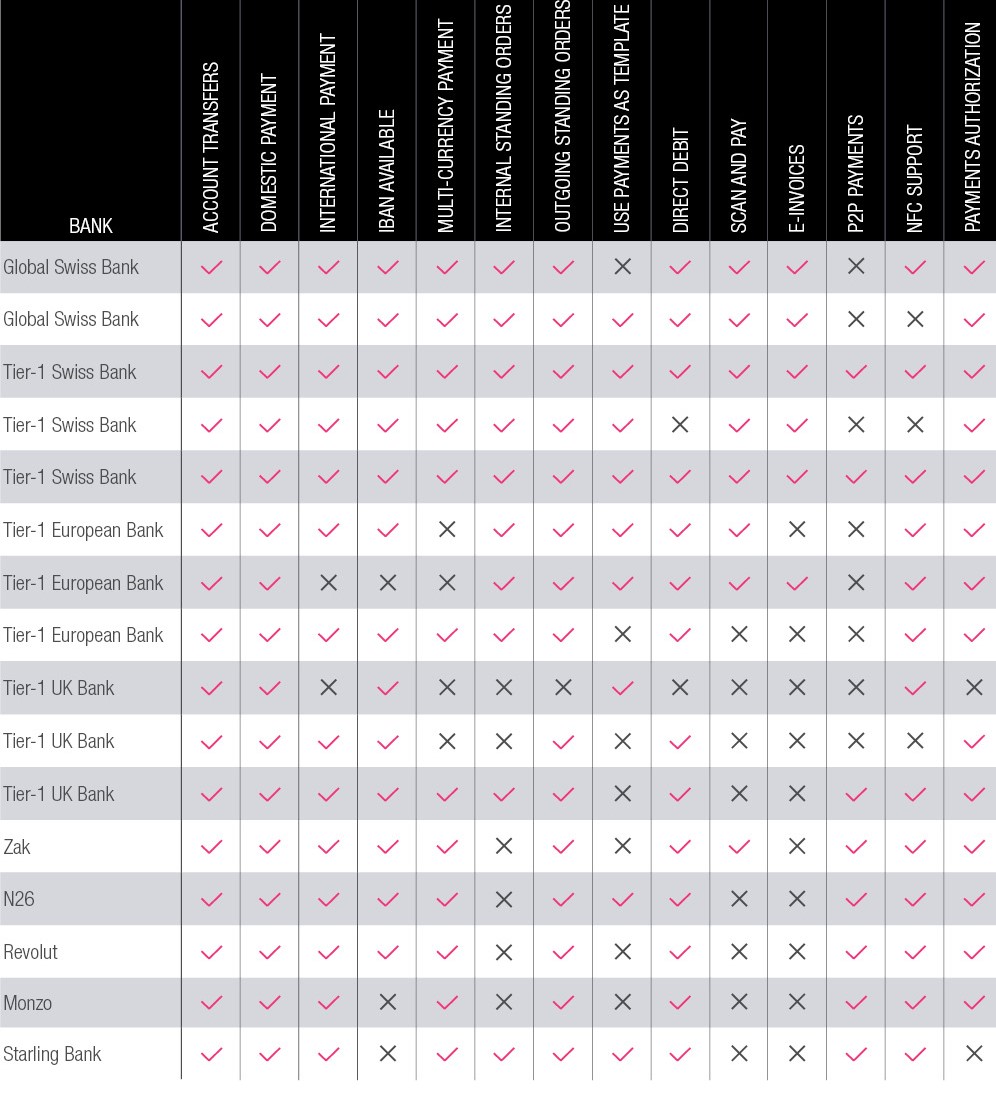Building upon the success of Benchmarking Mobile Banking in Switzerland Today, Capco Digital is following up with several deep-dive blogs on selected topics from the survey.
Today’s mobile payments space in Switzerland is dominated by international apps and platforms. However, the likes of Venmo, WeChat, Apple Pay or TWINT typically lack tight integration with full-fledged mobile banking.
Sending money is a more complex use case than transferring value from one person to another, and users still have broader needs in a non-homogeneous payment environment. In Switzerland, customers make payments through multiple means, such as direct debit (“Lastschriftverfahren”) and orange payment slips (“Einzahlungsschein”) that can be used to either pay at a post office or via online banking; debit and credit cards; and a mix of domestic, SEPA and international transfers, each with their own set of complications. Many of these payment methods offer additional options such as reoccurring payments, instant or ‘express’ payments and alternative payment method identifiers (e.g. using a mobile number instead of an IBAN to address the recipient).
Out of this chaos, we have distilled the key functionalities around payments that clients expect from their mobile banking solution, based on usage patterns observed at banks globally.
SO, HOW WOULD YOU LIKE TO PAY?
As payment functionalities are much broader in the mobile context, we believe customers should be able to make any kind of payment through their mobile phone. Yet, differentiating payment types by channel is confusing, and simply difficult to explain to customers and mostly originated by technical or financial constraints rather than an optimal user experience. The MVP payment functionalities include:
1. Transfer money between accounts
2. Receive and execute domestic payments
3. Execute international payments
4. Receive international payments via IBAN
5. Execute payments in a different currency than the debited account
6. Capture standing orders between accounts
7. Capture outgoing standing orders
8. Use previously executed payments as templates
9. Use direct debit
10. Scan and pay payment slips
11. View and manage e-invoices
12. Send and request P2P payments
13. Make contactless payments through the app (e.g. Apple Pay)
14. Added security features for controlling and/or authorizing online payments
As we recently found in our study Benchmarking Mobile Banking in Switzerland Today, banks rarely cover this broad spectrum of functionalities – but surprisingly, this area is where Swiss banks realize that payment types and customer needs vary.
Swiss banks score highest in coverage of these features, even though the experience may not always be seamless or easy. Often, the execution of simple payments requires a lot of input from users as most banks enforce stronger standards for payments than the regulator requires, such as requiring a name and address in addition to an IBAN to facilitate fraud checks and investigations.
Looking at our analysis of 16 traditional banks and challengers across Europe and Switzerland, we found that the latter lag in the payment space as they lack the processing infrastructure to support a wide variety of payment types.

OUR RECOMMENDATION
Based on our study, we have concluded that Swiss banks are ahead of the game in terms of the breadth of offered payment functionalities compared to international banks. They understand that in order to drive digital engagement with their customer that individual needs must be covered. However, it is recommended that in addition to covering the full, local payment spectrum, customer experience should be enhanced by simplified payment processes with limited input needed.
CONTACT
Sivananda Rallabandi, Partner
M +41 79 832 39 48
E sivananda.rallabandi@capco.com